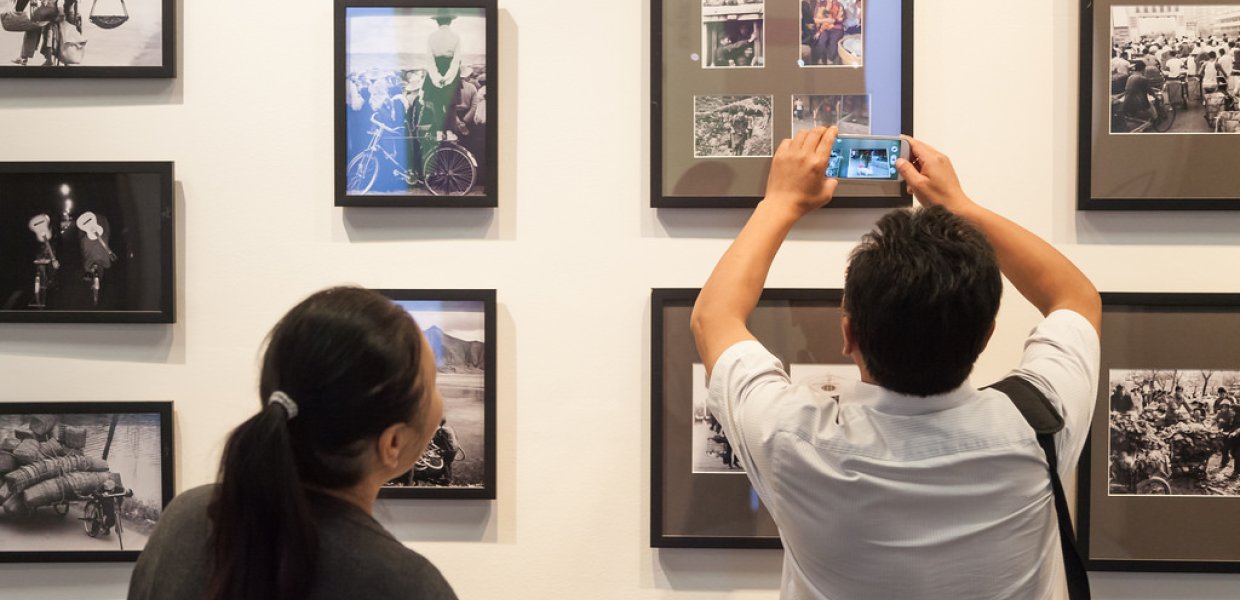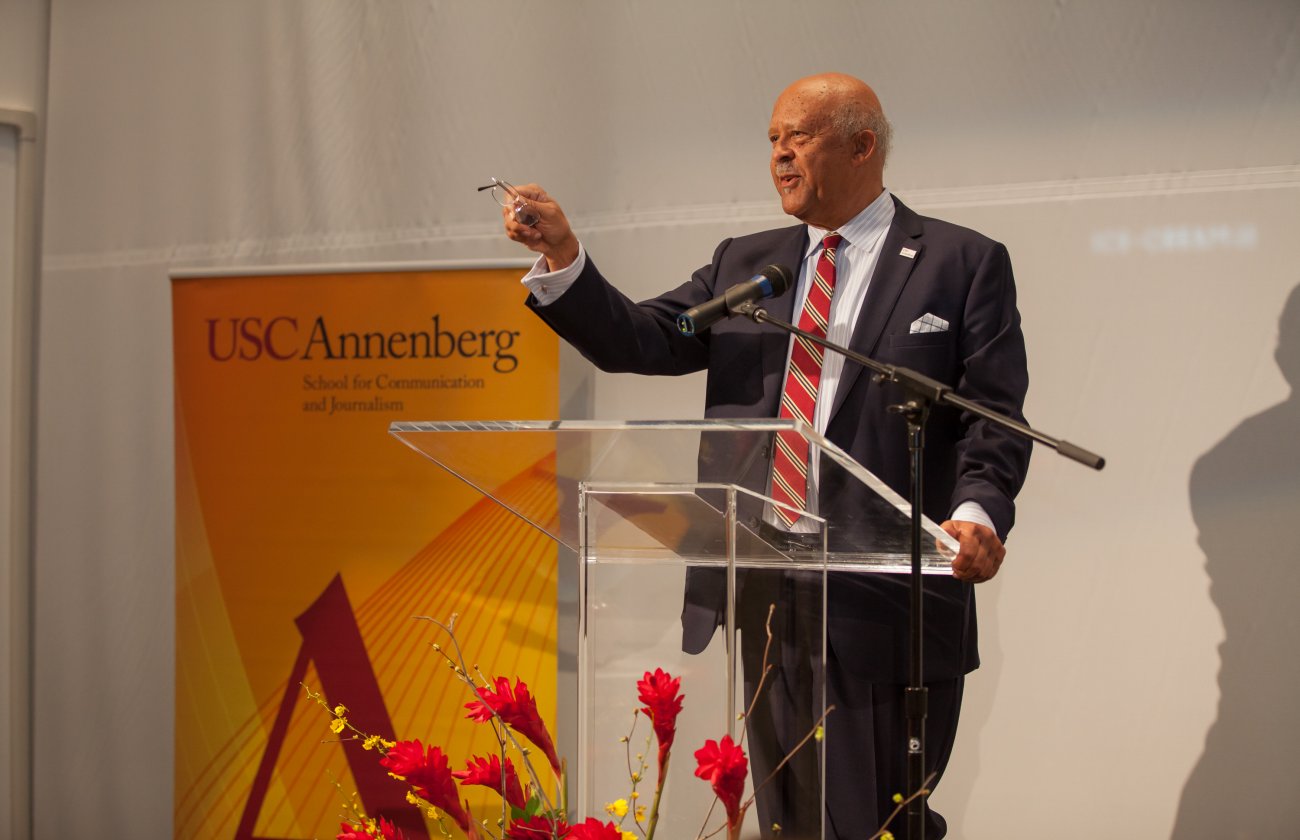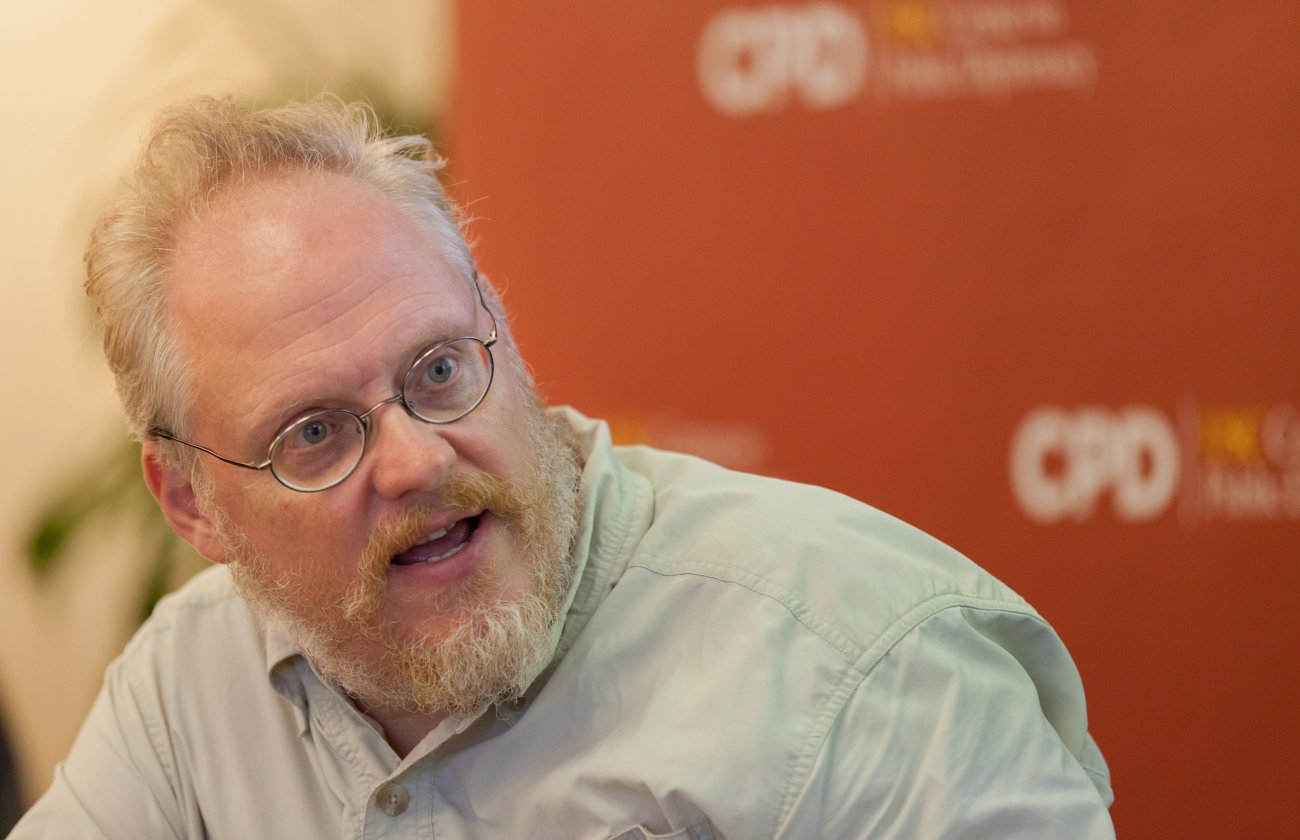In a joint venture between the USC Annenberg Center on Public Diplomacy and the USC U.S.-China Institute, the school brought Wang Wenlan’s photography exhibit “Depicting China: The Photographic Journey of Wang Wenlan” from University of Iowa to USC Annenberg, where it will be on display until December. Noted photojournalists and researchers attended the exhibit’s opening to speak about the art of photojournalism and how to navigate the field.
“What we hope to do, through our programming and research, is to help to facilitate a more informed discussion about China, China’s rise and U.S.-China relations,” professor Jay Wang, director of the USC Annenberg Center on Public Diplomacy, said.
A veteran photojournalist who has won practically every award China gives for photography, Wang Wenlan has had a profound influence on shaping how the world views China. Wang spent the last four decades photographing everyday life in China for China Daily, the nation’s largest English-language publication.
Director of the USC U.S.-China Institute Clayton Dube highlighted the power of photography and its ability to reach people anywhere. Wang, Dube said, is a master of harnessing the power of photography.
“This is a man who has had a tremendous influence within photojournalism in China and because of his work in English-language publications, he’s had an impact far beyond the boundaries of China,” Dube said.
When Wang’s career began at China Daily in 1981, he met journalist Judy Polumbaum, who was also on the publication’s staff. Polumbaum became a professor at University of Iowa, where she curated the exhibit and displayed it on April 3, 2015. She said that one of the objectives of the exhibit is to bring the work of a noted Chinese photographer to young Chinese as well as to new audiences in the United States, and USC seemed a very fitting place to continue that effort.
Polumbaum spoke about the publication’s early stages and how Wang’s career flourished at China Daily, where he became chief of the photography department. While Wang’s career has given him access to the highest-ranking government officials in China, Polumbaum said he was more interested in the struggles and triumphs of regular people.
“He’s interested in life in the streets,” Polumbaum said. “He’s concerned about his country and its development, and he shows unpleasant things as well as happy things, but he’s not gloomy, dark or brooding. He’s got a realistic but optimistic lens on the world.”
For those who have not experienced China, Wang’s photographs capture corners of Chinese society to create a sense of what life there is like.
Looking at the 18 photographs on the wall, video photojournalist Kristopher Li said he felt as if he could walk into any of Wang’s pictures and relive his life in Beijing, China. He even looked for himself in Wang’s picture of Tiananmen Square, and said that even though there were thousands of people there, the picture feels intensely familiar to him. A friend of Dube’s for more than three decades, Li has worked for KNBC covering major news events in Los Angeles and earning accolades for his coverage abroad since 1990.
“I feel so close to Mr. Wang Wenlan,” Li said. “I feel like I’ve known him for a long time. His work is about my life, so I’m so honored to be here.”
Throughout Li’s career, Wang has been a source of inspiration and admiration for Li. Wang’s photos continue to take Li back to a place in time that he holds close to his heart.
“If we have our hands and we can form a frame, here comes passion of a photographer, here comes imagination,” Li said. “We can just cut out that piece of life with our cameras and keep it with us forever.”
Steve Stroud, former Los Angeles Times deputy director of photography, spoke about the role of photojournalists in China. Stroud oversaw national and foreign photography at the LA Times and served as director of photography for six years at Hong Kong’s South China Morning Post, the largest English-language daily newspaper in Southeast Asia. Stroud also established, and was for two years president of, the Hong Kong Press Photographers Association, which advocates rights for photographers in Hong Kong and China.
Without Wang’s kind of unrestricted access, Stroud’s job was simple at times and complicated at others due to China’s restrictions on free press. He often found himself running into brick walls when covering breaking news, but was given access to everything he needed and more when the Chinese government wanted something covered.
“This is what they want you to see,” Stroud said. “So they make all of this available. So in doing that, they're controlling the news — letting you see what they want you to see and not allowing you to see what they don’t want you to see.”
Stroud urged photographers and journalists in China to push deeper for truth and beyond the government’s façade of a utopian China, as Wang boldly did during the 80s.
“There’s a lot of things we’re not seeing,” Stroud said. “China has a lot to show — perhaps more to show than to hide.”
“Depicting China: The Photographic Journey of Wang Wenlan” will be on display at USC Annenberg in ASC Room 207 until Dec. 18, 2015. The exhibit replaces “Lawrence Schiller: A Life in Photojournalism,” a sixty-year body of work that included Schiller’s work of Marilyn Monroe, Muhammad Ali and Martin Luther King.









